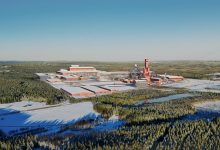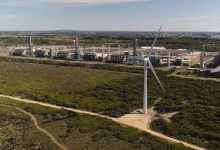Global metals sector
Prices to continue to rise in 2018, ahead of a possible slight decline in 2019
- The metals sector has been enjoying an upwards trend in prices and booming demand since mid-2016
- Growing protectionism in the US and Europe, along with retaliatory measures from China, have impacted business confidence and investments – but have not yet hampered economic growth
- Mixed trends expected until the end of 2019: base metal prices are likely to rise, but ferrous metals are set to decrease as the latter continue to struggle with overcapacity
The metals market is bullish but risks remain high
On the back of highly-synchronised economic growth, technological shifts boosting a surge in the use of metals and a shortfall in supply, metals have been benefitting from a bull market since mid-2016. An uptick in demand on this scale has not been observed since the period following the 2008 crisis. This, compounded with the weaker US dollar, has translated into a metal price rally, with aluminium posting a 37% year-to-date increase while cobalt quadrupled, copper and nickel prices grew by +44% and +53% respectively and zinc prices doubled, compared to the beginning of 2016.
While growth and profitability have returned back on track for most segments, the metals industry remains one of the riskiest in Coface’s sector assessment, with a credit risk level evaluated as ‘high’. Weaker actors are still pertaining to wholesaling activity and struggling with asymmetrical relationships with big player customers.
Mixed trends in 2018 and 2019
Political interference and geopolitical disruptions have always been important factors which generate volatility and price hikes in the metals sector. The recent protectionist measures introduced by the US (such as duties on imported steel and aluminium) and by the European Union (such as anti-dumping tariffs on steel and iron) have, so far, had a muted impact on Chinese metal producers, as they have refocused their production away from these markets and moved towards the domestic market. Chinese retaliatory tariffs to the US measures – on steel pipes, planes and cars – are unlikely to make a major impact on the automotive industry.
So far economic growth has not been hampered, as less than 1% of the US and China’s GDP is at stake, but a trade war would definitely impact the credit risks of companies. Coface anticipates that the appetite for investment and business confidence will be negatively impacted by this context of rising protectionism in 2018.
All signals suggest that the world economy has passed its growth peak and, in theory, this is likely to exert downwards pressure on prices as from 2019. In the short term, rising tensions will certainly continue to push up prices. This will benefit major base metals which are boosted by surges in demand for battery and electronic components. In the period from December 2017 to December 2019, aluminium is set to grow by a mere 2%. Copper should follow the same trend, growing by 2.4%, while nickel and zinc are expected to increase by 18% and 14% respectively. This will force end-users, such as battery and car manufacturers, to find other materials in case of scarcity or higher prices.
In contrast, steel prices will probably fall by 19% over the same period. Overcapacity is expected to increase as Chinese steelmakers lack discipline in capping production during periods of weakening prices. This base scenario of price falls in ferrous metals is supported by the overall high levels of company debts. Net debt ratios are especially high in China, where the sector is dominated by large state-owned enterprises, as well as in US (at 15%), where companies are much more exposed to potential corrections in cash flows.
Coface: for trade – Building business together
70 years of experience and the most finely meshed network have made Coface a reference in credit insurance, risk management and the global economy. With the ambition to become the most agile, global trade credit insurance partner in the industry, Coface’s experts work to the beat of the world economy, supporting 50,000 clients in building successful, growing and dynamic businesses. The Group’s services and solutions protect and help companies take credit decisions to improve their ability to sell on both their domestic and export markets.
In 2017, Coface employed approximately 4,100 people in 100 countries and registered turnover of EUR 1.4 billion.
Source: www.coface.com






